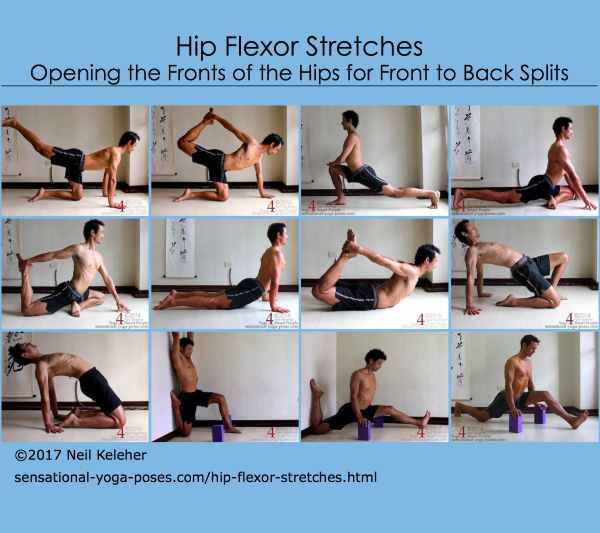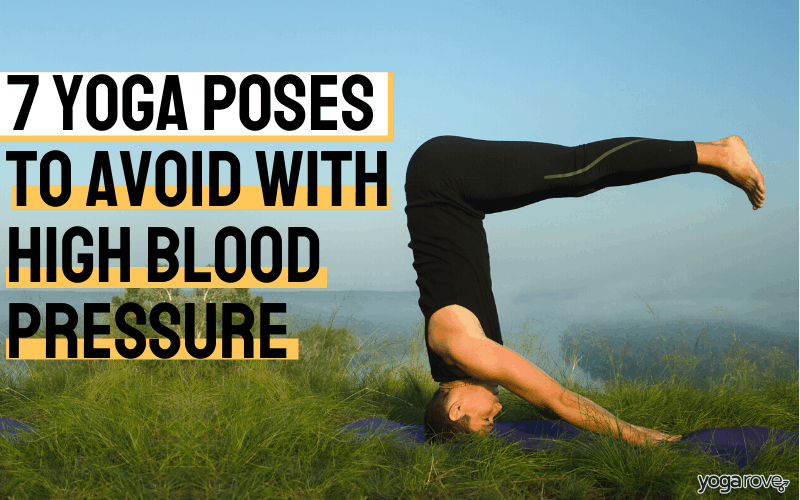Stretches for Hip Flexor Muscles can alleviate tightness and improve flexibility. Key exercises include lunges and the butterfly stretch.
Hip flexor muscles often become tight due to prolonged sitting or intense physical activity. Stretching these muscles can prevent discomfort and enhance overall mobility. Simple exercises like lunges and the butterfly stretch target the hip flexors effectively. Performing these stretches daily can lead to improved posture and reduced risk of injury.
Consistency is crucial for reaping the benefits. Proper technique ensures maximum effectiveness and prevents strain. Always warm up before stretching to avoid injury. Incorporating these stretches into your routine can make a significant difference in hip flexibility and overall well-being.
The Importance Of Hip Flexor Health
Understanding the importance of hip flexor health can greatly improve your mobility. Healthy hip flexors contribute to better posture and prevent injuries. Stretching these muscles regularly can enhance your overall physical performance.
Key Functions Of Hip Flexors
The hip flexors play a crucial role in many activities. Here are some key functions:
- Walking: Hip flexors help lift your legs as you walk.
- Running: They provide the power for forward movement.
- Sitting: These muscles help you stay seated comfortably.
- Stability: They stabilize your pelvis during various activities.
Common Issues And Injuries
Weak or tight hip flexors can lead to several problems. Here are some common issues:
| Issue | Description |
|---|---|
| Hip Flexor Strain | A tear in one of the hip flexor muscles. |
| Tendinitis | Inflammation of the tendons due to overuse. |
| Lower Back Pain | Weak hip flexors can cause lower back strain. |
| Reduced Mobility | Tight hip flexors can limit your range of motion. |
Paying attention to hip flexor health can prevent these issues. Regular stretching can keep these muscles flexible and strong.

Credit: www.sensational-yoga-poses.com
Identifying Tight Hip Flexors
Hip flexor tightness can disrupt daily activities and limit mobility. Recognizing the signs early helps to address the issue effectively. This section will guide you through the symptoms of tightness and provide self-assessment techniques to identify if your hip flexors are tight.
Symptoms Of Tightness
Tight hip flexors can cause various discomforts. Here are common symptoms:
- Lower back pain
- Stiffness in the hip area
- Difficulty in standing up straight
- Discomfort when walking or running
- Pain during exercises involving the hips
Self-assessment Techniques
Identifying tight hip flexors can be simple with a few self-assessment techniques. Try these methods:
- Thomas Test: Lie on your back on a table. Pull one knee to your chest. Keep the other leg flat on the table. If the flat leg lifts off, your hip flexors are tight.
- Lunge Stretch Test: Get into a lunge position. Push your hips forward. If you feel a deep stretch in your hip, you might have tight hip flexors.
- Seated Stretch Test: Sit on the floor with legs extended. Reach for your toes. If reaching is hard, it may indicate tight hip flexors.
Using these techniques can help you determine the tightness of your hip flexors. Addressing these signs early can prevent further complications.
Benefits Of Stretching Hip Flexors
Stretching your hip flexors can bring many benefits. It can improve your daily activities and your overall health. Here are some key benefits of stretching hip flexors.
Improved Mobility
Stretching hip flexors helps your hips move better. It makes everyday tasks easier. You can walk, run, and bend without pain.
Better mobility means you can enjoy more activities. Your hips will be flexible and strong.
Pain Reduction
Stretching hip flexors can reduce pain in your lower back. Tight hip flexors often cause back pain.
Regular stretching can ease this pain. You will feel more comfortable sitting and standing.
Enhanced Athletic Performance
Hip flexor stretches can boost your sports performance. Athletes need flexible hips to perform well.
With flexible hip flexors, you can run faster and jump higher. Your movements will be smoother and more efficient.
| Benefit | Description |
|---|---|
| Improved Mobility | Better hip movement and flexibility |
| Pain Reduction | Less back pain and discomfort |
| Enhanced Athletic Performance | Better sports performance with flexible hips |
:max_bytes(150000):strip_icc()/standinglungestretch-d85003f162a9407e8112b91de42bf022.jpg)
Credit: www.verywellfit.com
Preparation For Hip Flexor Stretches
Before you start Stretches for Hip Flexor Muscles, it’s essential to prepare properly. This preparation ensures you stretch effectively and safely. Let’s look at the steps to get ready.
Warm-up Essentials
A proper warm-up is crucial. It increases blood flow to your muscles and prepares your body for stretching.
- Light Cardio: Start with 5-10 minutes of light cardio. You can walk, jog, or use a jump rope.
- Dynamic Stretches: Perform dynamic stretches like leg swings and arm circles. These help to loosen your muscles.
Safety Tips
Safety is key to effective stretching. Follow these tips to ensure you stretch safely.
- Listen to Your Body: If you feel pain, stop immediately. Stretching should never cause pain.
- Warm Muscles: Always stretch warm muscles. Cold muscles are more prone to injury.
- Proper Form: Maintain proper form to avoid injury. Never force a stretch.
| Safety Tip | Details |
|---|---|
| Gradual Progression | Increase your stretch intensity gradually. Avoid sudden, intense stretches. |
| Hydration | Stay hydrated to keep your muscles supple. |
Basic Stretches For Beginners
Stretching your hip flexor muscles helps improve flexibility and reduce pain. For beginners, starting with basic stretches can be very effective. These stretches are simple and easy to follow. Here are three essential hip flexor stretches:
Seated Butterfly Stretch
The Seated Butterfly Stretch is excellent for your hip flexors. Follow these steps:
- Sit on the floor with your legs straight.
- Bend your knees and bring your feet together.
- Hold your feet with your hands.
- Gently press your knees toward the floor.
- Hold the position for 20-30 seconds.
This stretch also helps your inner thighs. Make sure to breathe deeply while holding the position.
Standing Quad Stretch
The Standing Quad Stretch is another effective stretch for beginners. Here’s how you do it:
- Stand straight and hold onto a wall for balance.
- Lift your right foot behind you and grab your ankle with your right hand.
- Pull your foot towards your buttocks.
- Keep your knees together and hold for 20-30 seconds.
- Switch to the left leg and repeat.
This stretch targets the quadriceps and hip flexors. Remember to keep your back straight.
Bridge Pose
The Bridge Pose stretches your hip flexors and strengthens your back. Follow these steps:
- Lie on your back with your knees bent and feet flat on the floor.
- Place your arms at your sides, palms facing down.
- Lift your hips towards the ceiling.
- Hold the position for 20-30 seconds.
- Lower your hips back to the floor.
This pose not only stretches your hip flexors but also engages your core muscles.
| Stretch | Duration | Muscles Targeted |
|---|---|---|
| Seated Butterfly Stretch | 20-30 seconds | Hip Flexors, Inner Thighs |
| Standing Quad Stretch | 20-30 seconds | Quadriceps, Hip Flexors |
| Bridge Pose | 20-30 seconds | Hip Flexors, Core |
:max_bytes(150000):strip_icc()/kneelinghipflexorstretch-2f62ca7178164dcb88d88ad2fd17fa51.jpg)
Credit: www.verywellfit.com
Advanced Stretching Techniques
Advanced stretching techniques can help improve flexibility and reduce Stretches for Hip Flexor Muscles tension. These techniques target the hip flexor muscles, which are crucial for movement. Here are three advanced stretches for your hip flexors.
Psoas Stretch
The Psoas stretch targets one of the primary hip flexors. This stretch helps improve flexibility and reduce tension in the lower back.
- Kneel on your right knee.
- Place your left foot in front, creating a 90-degree angle.
- Press your hips forward gently.
- Hold for 30 seconds and switch sides.
Lunging Hip Flexor Stretch
The Lunging Hip Flexor Stretch is effective for stretching the entire hip flexor group. This stretch helps improve mobility and reduce tightness.
- Start in a lunge position with your right foot forward.
- Lower your left knee to the ground.
- Push your hips forward until you feel a stretch.
- Hold for 30 seconds and switch legs.
Dynamic Hip Flexor Mobilization
The Dynamic Hip Flexor Mobilization combines movement with stretching. This technique helps improve flexibility and muscle strength.
- Stand with feet hip-width apart.
- Step forward into a lunge position.
- Rotate your torso toward your forward leg.
- Return to the starting position and switch sides.
- Repeat 10 times on each side.
Incorporating Stretches Into Your Routine
Incorporating stretches into your routine can greatly benefit your hip flexors. Consistent stretching helps enhance flexibility and prevent injuries. This practice can be part of your daily schedule or tailored around your workouts. Below, find helpful tips on how to integrate stretches into your routine effectively.
Daily Stretching Schedule
Creating a daily stretching schedule is key for consistency. Dedicate 10-15 minutes each day to focus on your hip flexors. You can do this either in the morning or before bed. Here is a simple daily schedule:
- Morning: Perform light stretches to wake up your muscles.
- Afternoon: Do a quick stretch session during lunch break.
- Evening: End your day with deeper, more relaxing stretches.
Pre And Post-workout
Stretching before and after workouts is crucial. It prepares your muscles for activity and aids recovery. Here are some tips:
| Time | Stretch Type | Benefit |
|---|---|---|
| Pre-Workout | Dynamic Stretches | Increase blood flow and warm up muscles. |
| Post-Workout | Static Stretches | Help muscles relax and prevent stiffness. |
Examples of dynamic stretches include leg swings and hip circles. For static stretches, try lunges and butterfly stretches.
Listening To Your Body
Pay attention to your body’s signals. If you feel pain, stop immediately. Stretching should never cause discomfort. Here are some guidelines:
- Start with gentle stretches and gradually increase intensity.
- Hold each stretch for 20-30 seconds.
- Breathe deeply to help relax your muscles.
Remember, consistency is more important than intensity. By listening to your body, you can safely improve your hip flexor flexibility.
Monitoring Progress And Adjustments
Tracking your progress is crucial when stretching your hip flexor muscles. Adjustments help you achieve better results and avoid injuries.
Keeping A Stretching Diary
Maintaining a Stretches for Hip Flexor Muscles can be very beneficial. Note down the stretches you perform daily. Track the duration and intensity of each stretch. Record any discomfort or pain you feel. This helps in identifying patterns and making necessary adjustments.
| Date | Stretch Type | Duration | Intensity | Notes |
|---|---|---|---|---|
| 01/01/2023 | Hip Flexor Stretch | 30 seconds | Moderate | Felt slight discomfort |
| 01/02/2023 | Hip Flexor Stretch | 35 seconds | Moderate | Felt better |
When To Increase Intensity
It’s important to know when to increase intensity. If a stretch feels too easy, it might be time to step it up. Gradually increase the duration of your stretches. Also, increase the stretch depth. Never push yourself too hard. Your body will signal when it’s ready for more intensity.
- Increase duration by 5-10 seconds
- Enhance stretch depth slightly
- Listen to your body
Seeking Professional Advice For Persistent Issues
If you experience persistent pain, seek professional advice. A physical therapist can offer tailored guidance. They can suggest specific exercises and stretches. They can also help identify underlying issues. This ensures you are stretching safely and effectively.
- Consult a physical therapist
- Get personalized exercise plans
- Identify and address underlying issues
Frequently Asked Questions
What Are Hip Flexor Stretches?
Hip flexor stretches help to lengthen and relax the muscles in your hips. These stretches improve flexibility, reduce pain, and enhance mobility.
How To Stretch Hip Flexor Muscles?
To stretch hip flexors, perform lunges, hip bridges, and butterfly stretches. Hold each stretch for 20-30 seconds, and repeat 2-3 times.
Why Are Hip Flexor Stretches Important?
Hip flexor stretches are important for reducing tightness, preventing injuries, and improving overall hip mobility. They also help in alleviating lower back pain.
When Should I Do Hip Flexor Stretches?
You should do hip flexor stretches before and after workouts, or anytime you feel tightness in your hips. Consistency is key.
Conclusion
Hip flexor stretches can improve flexibility and reduce pain. Incorporate these stretches into your routine for better mobility. Consistency is key to seeing results. Remember to listen to your body and avoid overstraining. Start today and experience the benefits of healthy hip flexors.




Leave a Reply